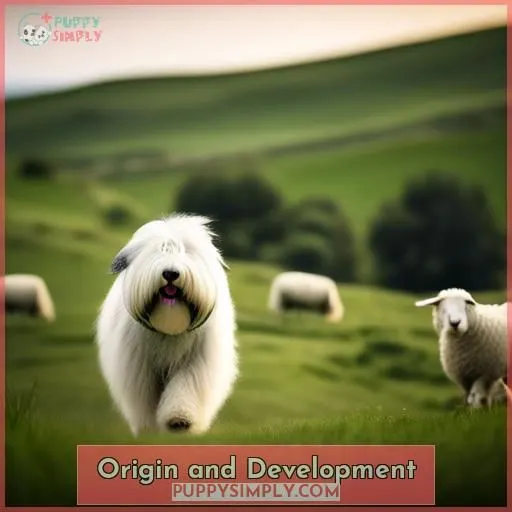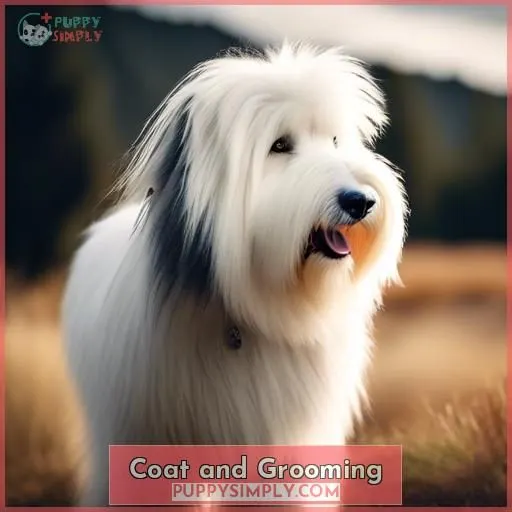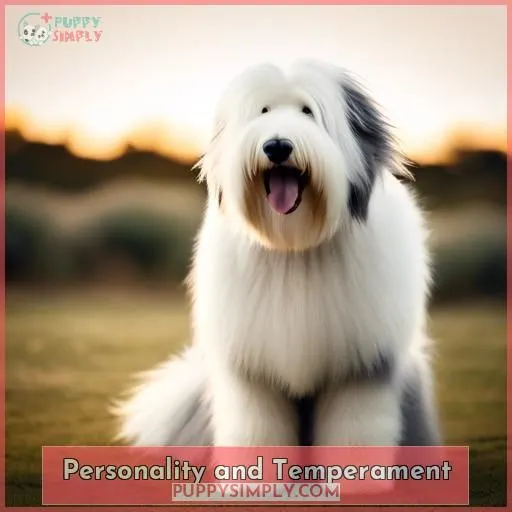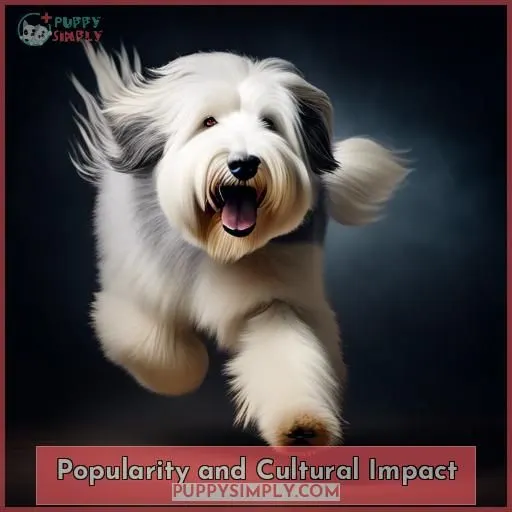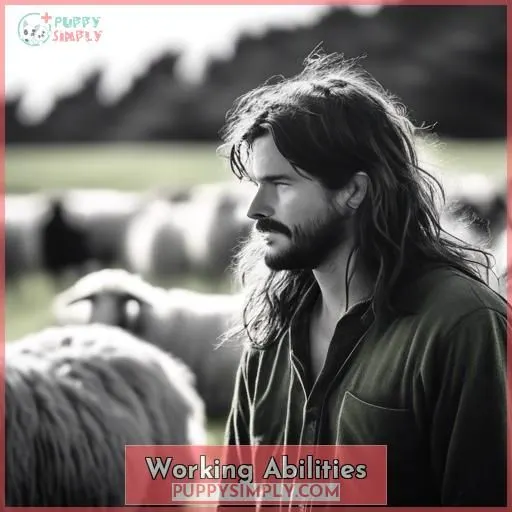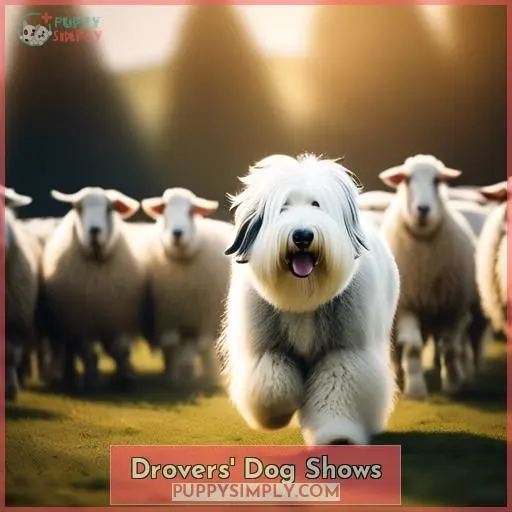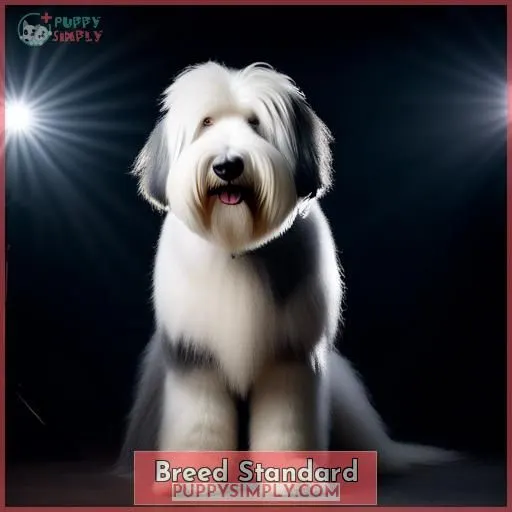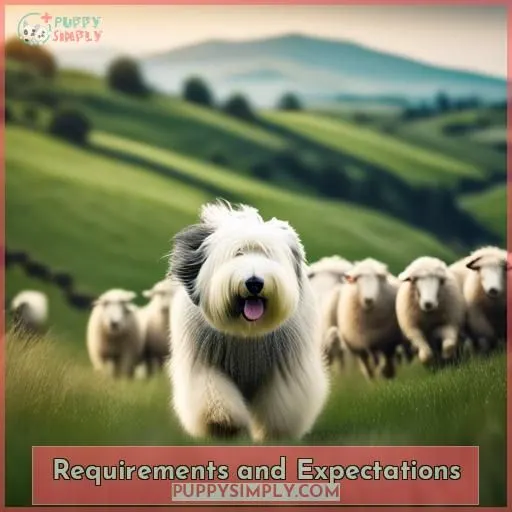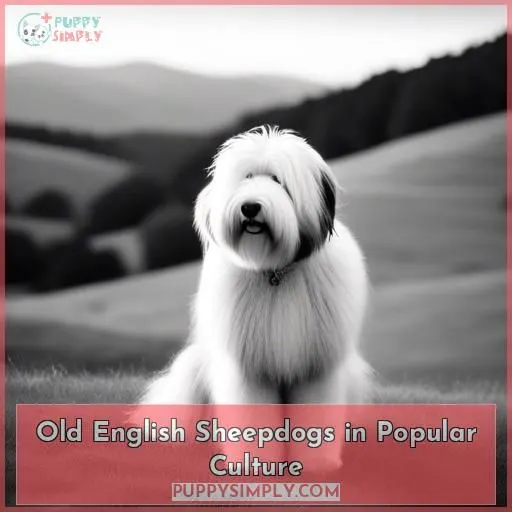This site is supported by our readers. We may earn a commission, at no cost to you, if you purchase through links.
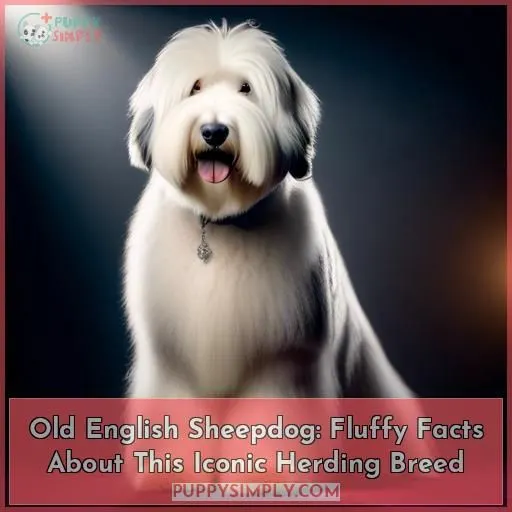 Meet the Old English Sheepdog, an iconic herding breed celebrated for its fluffy coat.
Meet the Old English Sheepdog, an iconic herding breed celebrated for its fluffy coat.
This intelligent, energetic companion thrived on the English countryside, originally developed to drive cattle and sheep.
Today, their lovable nature and distinctive appearance make them cherished family dogs.
Uncover fascinating facts about their history, grooming requirements, and endearing personality in this comprehensive guide.
Table Of Contents
- Key Takeaways
- Origin and Development
- Coat and Grooming
- Personality and Temperament
- Popularity and Cultural Impact
- Working Abilities
- Drovers’ Dog Shows
- Breed Standard
- Health and Care
- Requirements and Expectations
- Old English Sheepdogs in Popular Culture
- Frequently Asked Questions (FAQs)
- What is the historical significance of the Old English Sheepdog’s bobtail?
- How did the Old English Sheepdog gain popularity in the United States?
- What are the key physical characteristics of the Old English Sheepdog?
- How does the Old English Sheepdog’s temperament differ from other breeds?
- What unique traits make the Old English Sheepdog stand out in popular culture?
- Conclusion
Key Takeaways
- Developed in Southwestern England in the early 19th century
- Thick, double coat that is insulating and waterproof
- Playful and entertaining personality, protective and vigilant
- Favorite among wealthy families in America, including the Vanderbilts and Guggenheims
Origin and Development
The Old English Sheepdog, often referred to as the Bobtail, has a rich and fascinating history that dates back to the early 19th century in Southwestern England. This breed was primarily developed as a drover’s companion, helping farmers drive cattle and sheep to market.
Its origins can be traced back to the Scotch Bearded Collie and the Russian Owtchar, among other European herding dogs.
The breed’s name is derived from its use as a drover’s dog, which was exempt from taxes due to its working status. To prove their occupation, their tails were docked, leading to the custom of calling the sheepdog by the nickname Bob or Bobtail.
Despite this nickname, the lack of a tail hasn’t affected the breed’s ability to work with heavier kinds of sheep or cattle.
The Old English Sheepdog gained popularity in the United States through the promotion of Pittsburgh industrialist Wm. Wade in the late 1880s. By the turn of the century, five of the ten wealthiest American families, including the Morgans, Vanderbilts, Goulds, Harrisons, and Guggenheims, owned, bred, and exhibited the Old English Sheepdog.
The social prominence of these owners led to the breed’s recognition and acceptance in the U.
Today, the Old English Sheepdog is a beloved family pet, show dog, and working breed known for its intelligence, versatility, and playful nature. Despite its origins as a herding dog, the breed has adapted to various roles and continues to captivate the hearts of dog lovers worldwide.
Coat and Grooming
As a gentle giant, the Old English Sheepdog is known for its thick, double coat that’s both insulating and waterproof, making it an excellent companion in the English climate. The coat, which gives the breed its woolly appearance, requires three-to-four hours of weekly grooming to prevent matting and maintain its health.
The coat can be black with or without white, grizzle, blue, blue merle, and white markings.
Grooming tools are essential for maintaining the Old English Sheepdog’s coat. A pin brush is recommended for removing loose hair, while scissors are used for trimming the beard and bum area to 2 inches or less.
Regular baths and coat treatments are necessary to keep the coat healthy. Some owners choose to clip the coat short for show purposes, but this isn’t necessary for pets.
Professional grooming is also an option for those who want to keep their Old English Sheepdog’s coat in top condition. Despite the time and cost involved in grooming, the Old English Sheepdog is a beloved breed known for its loyalty, protection, and love for its family.
Personality and Temperament
After brushing up on the Old English Sheepdog’s woolly coat, you’ll find their personality is just as endearing.
These dogs are the life of the party with their playful antics, always ready to entertain with a humorous demeanor that’ll have you chuckling.
They’re not just show dogs; their protective nature makes them vigilant family pets, though they’ll often express their opinions with vocal communication.
Don’t be surprised by their stubborn streak; it’s all part of their charm.
This working dog breed may have roots in herding, but they’ve herded their way into popular culture and our hearts with their lovable quirks.
Popularity and Cultural Impact
In the realm of dog breeds, the Old English Sheepdog stands out not only for its iconic appearance but also for its rich cultural impact and popularity.
- Prominence Among the Elite: The Old English Sheepdog has been a favorite among wealthy families in America, including prominent names like the Vanderbilts and Guggenheims.
- Hollywood Star: This breed has left its paw prints in the entertainment industry, appearing in iconic films like Chitty Chitty Bang Bang and alongside Al Pacino in Serpico.
- Musical Muse: Did you know that Paul McCartney’s song Martha My Dear was inspired by his beloved Old English Sheepdog? This breed has even influenced music legends!
The Old English Sheepdog’s charm and versatility have truly made it a beloved figure in both high society and popular culture.
Working Abilities
Old English Sheepdogs are more than just fluffy companions; they’re versatile herding dogs with exceptional working abilities.
From managing sheep to deterring predators and protecting livestock, these dogs excel in various tasks.
Their winter coats, resembling a large ball of fluff, not only provide insulation but also aid in blending with sheep during work.
With a bear-like gait and a loud, distinctive bark, they bring energy and vigor to their tasks.
To unveil the secrets of the Old English Sheepdog’s working prowess, let’s delve into their history and the unique traits that make them exceptional drovers and stock dogs.
Drovers’ Dog Shows
As we delve into the fascinating world of Drovers’ Dog Shows, you’ll find it’s a unique slice of drover dog history that showcases the breed’s versatility and stamina.
- Drover Dog History: These shows began in 1891, spotlighting the breed’s essential role in driving livestock.
- Show Dog Characteristics: Judges looked for stamina, steadiness, and the ability to deter predators—key traits for a working dog.
- Judging Criteria: Beyond physical attributes, the dog’s temperament and working capabilities were under the spotlight.
- Veterinary Care and Health Screening: Ensuring the dogs were in top health was crucial, highlighting the importance of regular veterinary care and health screenings for these hardworking canines.
These shows weren’t just a competition; they were a celebration of the breed’s indispensable role in rural life.
Breed Standard
The Old English Sheepdog’s breed standard is the blueprint that defines the ideal characteristics of the breed. This standard covers everything from the dog’s size and proportions to its distinctive coat and unique gait.
Judges at dog shows use this standard to evaluate how closely each OES conforms to the breed’s ideal traits.
While the standard has evolved over time, it still emphasizes the OES’s sturdy, square build, profuse shaggy coat, and powerful yet agile movement. These conformational traits not only give the breed its iconic look but also enable its versatility in performance events like herding and obedience.
Maintaining genetic diversity is crucial to preserving the OES’s unique color genetics and preventing health issues down the line.
Health and Care
Transitioning from the breed standard, let’s dive into the nitty-gritty of caring for your fluffy Old English Sheepdog.
These pups need regular exercise – at least an hour a day, split into two sessions.
And get ready to brush, brush, brush – their thick coats require 3-4 hours of grooming per week to keep them looking their best.
Health-wise, watch out for issues like hip and elbow dysplasia, eye problems, and weight gain.
Training can be a challenge too, as these smart cookies can be a tad stubborn.
But with patience and positive reinforcement, you’ll have your Old English Sheepdog obeying your every command in no time.
Just don’t forget the treats – these pups love a good reward!
Requirements and Expectations
As an Old English Sheepdog owner, you’ll need to be ready to commit to their exercise and training needs. These pups aren’t couch potatoes – they require at least an hour of exercise daily, whether it’s long walks, playtime, or herding activities.
And training is a must, as their independent streak means they’ll try to do things their own way if you don’t establish yourself as the leader.
If you’re a first-time dog owner, an Old English Sheepdog may not be the easiest choice. Their working dog heritage means they thrive on having a job to do, so you’ll need to provide plenty of tasks and activities to keep them mentally stimulated.
But with patience, consistency, and a willingness to put in the work, you can have a loyal, loving companion in this iconic breed.
Old English Sheepdogs in Popular Culture
After diving into the care and quirks of Old English Sheepdogs, let’s wag our tails into their pop culture pawprint.
OES have trotted beyond the fields into movies, literature, music, art, and advertising, capturing hearts with their shaggy charm.
They’ve starred in classics like Disney’s The Shaggy Dog and serenaded in Paul McCartney’s Martha My Dear, showcasing their versatility from screen to song.
Their fluffy forms have inspired artists and advertisers alike, becoming the cuddly face of brands like Dulux.
Whether it’s an OES bounding across your TV screen or immortalized in a painting, these dogs have a knack for stealing the spotlight and, quite possibly, a piece of your sandwich.
Frequently Asked Questions (FAQs)
What is the historical significance of the Old English Sheepdog’s bobtail?
You’re right, their bobtail was quite practical – it prevented painful sheering during herding work.
How did the Old English Sheepdog gain popularity in the United States?
You’re on the edge of your seat, aren’t you? The Old English Sheepdog captured America’s heart through wealthy owners flaunting them at prestigious shows.
What are the key physical characteristics of the Old English Sheepdog?
You’ll instantly recognize the Old English Sheepdog’s shaggy, unkempt coat and solid, muscular build.
How does the Old English Sheepdog’s temperament differ from other breeds?
Compared to other breeds, Old English Sheepdogs possess a mischievous sense of humor that’ll have you rolling your eyes and chuckling. Their loving personalities make them devoted family companions, despite their stubborn streak.
What unique traits make the Old English Sheepdog stand out in popular culture?
You can’t miss the Old English Sheepdog’s shaggy, bear-like appearance and humorous personality traits featured in films like The Shaggy Dog and 101 Dalmatians.
Conclusion
Are you captivated by these fluffy facts about the Old English Sheepdog? This iconic herding breed’s endearing personality, distinctive appearance, and remarkable history make them cherished companions.
Embracing their energetic nature and grooming needs, you’ll find an unwavering friend in this lively, intelligent dog.

